The residents at the Large Animal Research facility all have hooves, fur and horns or antlers. Sadly, Rudolph was nowhere to be found but scientists were hard at work studying other reindeer, caribou and musk oxen. The data that the researchers collect at this facility is being used to develop bio-fuel technology. It's also helping people to understand how animals are being affected by climate change.A long snowy road leads back to the facility which is made up of wide fields, round-up pens and research barns. Lindsey, the outreach coordinator, met us by the musk ox field and showed us around. Researchers at the center are examining what is going on in the stomachs of these large mammals. By inserting a rope of digestible material into a "plug" on the side of the musk ox they can study what goes on hour-by-hour. Look for the plug on the musk ox's side. Musk oxen eat all sorts of very tough vegetation so their stomach is a pretty interesting place!
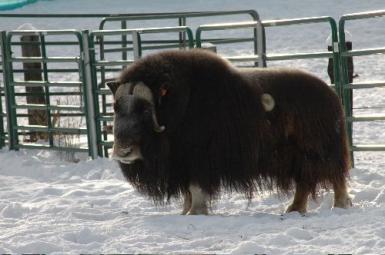 This Musk Ox lives at the Large Animal Research Station.
This Musk Ox lives at the Large Animal Research Station.
This is one of the many ways that they have adapted to living in the far north. Scientists at the facility are studying how they keep warm as well as their diet. Take a look at this picture of the lead scientist measuring the fat and coat of "Yessie the Musk Ox". Yessie adds as 5 am of fat each winter. That's quite a winter suit! Musk ox fur is called qiviut. It is very thick as you can see and super soft! Alaskans even make scarves and hats from it!
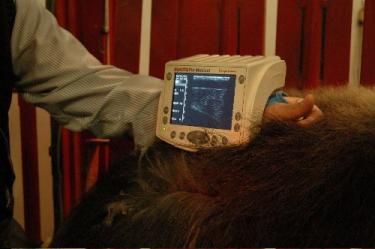 Scientists at the Large Animal Research Station use ultrasound machines to look inside animals without having to do surgery!
Scientists at the Large Animal Research Station use ultrasound machines to look inside animals without having to do surgery!
We also met caribou and reindeer! Check out the pictures below and see if you can figure out whose body parts belong to whom before you read about them. Go to the photo gallery for more pictures!
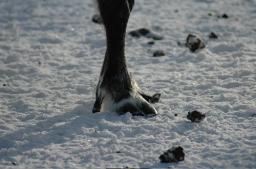 The reindeer!
The reindeer!
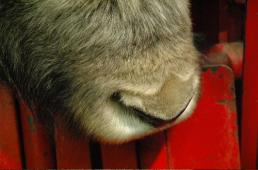 Yessie the Musk Ox
Yessie the Musk Ox
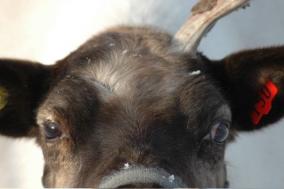 Reindeer eyes!
Reindeer eyes!
Guess who ?
Over and out! Ms. W

